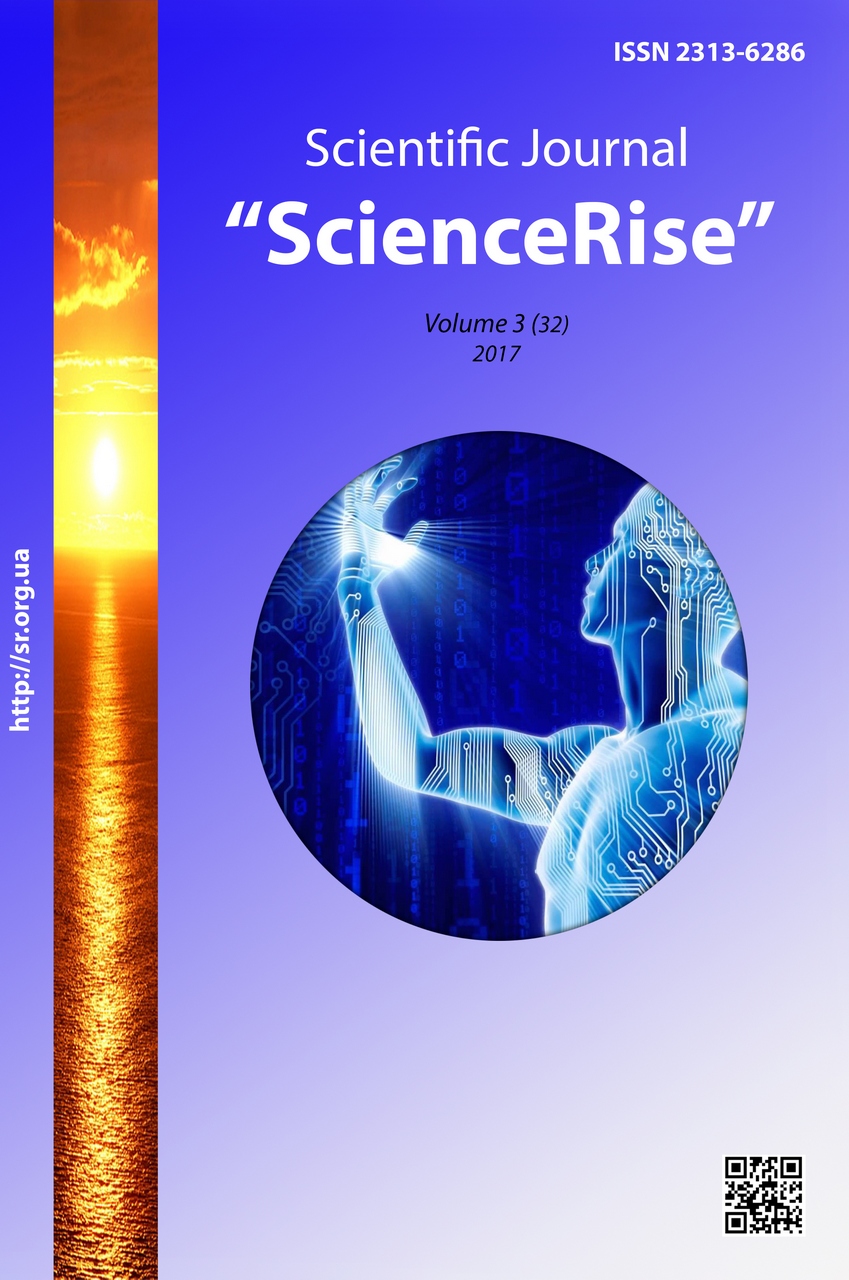Strobing the moving objects marks in the image processing system with stationary video camera
DOI:
https://doi.org/10.15587/2313-8416.2017.96524Keywords:
image processing, tracking algorithms, image recognition, strobing the marks, shooting trainerAbstract
The method of a fast-acting increase in the images processing system with a stationary camera is offered by applying the strobing operation to detected objects. The article gives a short analysis of the most often used practice methods of tracking moving objects on images with a static and dynamic background. Also the fast-acting parameters are given and analyzed for the synthesized method in the condition of a high interference
References
Bieliaiev, O. V., Kartashov, V. M. (2015). Obnaruzhenie ob’ektov zadannoj formy i opredelenie ih koordinat na izobrazhenii v mul’timedijnom strelkovom trenazhere [Objects detection and determination of their coordinates on the image in a multimedia shooting simulator]. Information processing systems, 10 (135), 16–21.
Zubkov, O. V., Koryttsev, I. V., Oleynikov, V. M., Sidorov, G. I., Kondrashov, E. V. (2011). Pat. No. 59467 UA. Electronic laser shooting simulator. MPKF41G3/26. No. u201015833; declareted: 28.12.2010; published: 10.05.2011, Bul. No. 9.
Kartashov, V. M., Sidorov, G. I., Bieliaiev, O. V. (2013). Pat. No. 80324 UA. Advanced electronic laser shooting simulator. MPKF41G3/26. No. u201213148; declareted: 19.11.2012; published: 27.05.2013, Bul. No. 10.
Slipchenko, M. I., Kartashov, V. M., Sidorov, G. I., Bieliaiev, O. V. (2013). Pat. No. 83387 UA. Advanced electronic laser shooting simulator. MPKF41G3/26. No. u201301988; declareted: 18.02.2013; published: 10.09.2013, Bul. No. 17.
Jafri, R., Arabnia, H. R. (2009). A Survey of Face Recognition Techniques. Journal of Information Processing Systems, 5 (2), 41–68. doi: 10.3745/jips.2009.5.2.041
Nixon, M. (1985). Eye spacing measurement for facial recognition. SPIE Proceedings, 575, 279–285. doi: 10.1117/12.966515
Reisfeld, D. (1994). Generalized symmetry transforms: attentional mechanisms and face recognition. Tel-Aviv, 56.
Graf, H., Chen, T., Petajan, E., Cosatto, E. (1995). Locating faces and facial parts. International Workshop on Automatic Face- and Gesture-Recognition, 41–46.
Cox, I., Ghosn, J., Yianilos, P. (1996). Featurebased face recognition using mixture-distance. Proceedings of IEEE Conference on Computer Vision and Pattern Recognition, 209–216. doi: 10.1109/cvpr.1996.517076
Konushin, A. (2003). Slezhenie za tochechnymi osobennostjami sceny [Tracking the point features of the scene]. Computer graphics and multimedia, 4. Available at: http://www.ict.edu.ru/ft/002409/num4pntrac.pdf
Vezhnevets, A. P. (2006). Metody klassifikacii s obucheniem po precedentam v zadache raspoznavanija ob’ektov na izobrazhenijah [Classification methods with learning by use of precedents in the problem of recognition of objects in images]. International Conference of Computer Graphics and View. Novosibirsk. Available at: http://graphicon.ru/html/2006/proceedings/papers/fr10_34_VezhnevetsA.pdf
Amit, Y. (2002). 2D object detection and recognition: models, algorithms, and networks. Cambridge: MIT Press, 324.
Viola, P., Jones, M. J. (2001). Rapid Object Detection using a Boosted Cascade of Simple Features. IEEE CVPR. doi: 10.1109/cvpr.2001.990517
Ferryman, J. M., Maybank, S. J., Worrall, A. D. (2000). Visual Surveillance for Moving Vehicles. International Journal of Computer Vision, 37 (2), 187–197. doi: 10.1023/a:1008155721192
KaewTraKulPong, P., Bowden, R. (2002). An Improved Adaptive Background Mixture Model for Real-time Tracking with Shadow Detection. Video-Based Surveillance Systems, 135–144. doi: 10.1007/978-1-4615-0913-4_11
Kuzmin, S. Z. (1967). Digital processing of radar information. Moscow: Soviet radio, 400.
Abezgauz, G. G., Tron, A. P., Kopenkin, Yu. N., Korovina, I. A. (1970). Handbook of Probabilistic Calculations. Moscow: Military Publishing, 536.
Downloads
Published
Issue
Section
License
Copyright (c) 2017 Oleksii Bieliaiev, Volodymyr Kartashov, Francy Loutouangou

This work is licensed under a Creative Commons Attribution 4.0 International License.
Our journal abides by the Creative Commons CC BY copyright rights and permissions for open access journals.
Authors, who are published in this journal, agree to the following conditions:
1. The authors reserve the right to authorship of the work and pass the first publication right of this work to the journal under the terms of a Creative Commons CC BY, which allows others to freely distribute the published research with the obligatory reference to the authors of the original work and the first publication of the work in this journal.
2. The authors have the right to conclude separate supplement agreements that relate to non-exclusive work distribution in the form in which it has been published by the journal (for example, to upload the work to the online storage of the journal or publish it as part of a monograph), provided that the reference to the first publication of the work in this journal is included.

